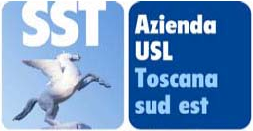Database NORM Industries
Go to DATABASE
Legislative Decree 101/2020 regulates all “practices involving the use of materials containing naturally occurring radionuclides”, the so-called “industries involving NORM”. The list of Industrial sectors involving NORM to which the Decree applies can be found in Annex II of the Decree, within which are practices that involve:
- use or storage of materials containing natural radionuclides;
- production of residues or effluents containing radionuclides of natural origin.
For industrial sectors of interest from the radiation protection point of view, the Database “NORM Industries” collects radiometric data about NORM matrices from national and international peer-reviewed publications and grey literature. The Database has been developed with the following objectives:
- providing activity concentration values for the main natural radionuclides belonging to the decay chains of 238U and 232Th and 40K, organized according to the industrial sector and type of material;
- providing stakeholders with an accessible tool that may give indications on the average radiological content of natural radionuclides in solid and liquid NORM matrices, used in European and non-European countries;
The Database “NORM industries” was compiled through an extensive review of national and international literature. Currently, radiometric data has been collected from over 6,000 samples drawn from approximately 250 papers. The data have been meticulously checked and validated to avoid misclassification and repetition. Each data entry is provided together with the reference paper from which it was taken, where further information can be found.
The “NORM industries” database has been developed within the framework of the INAIL BRIC2019 ID30 project titled “Operational protocols and methodologies for the implementation of the new radiation protection legislation, transposition of Directive 2013/59/Euratom, in NORM industrial sectors with particular radiological impact”.
USER GUIDE – How to use the NORM database is described here.








